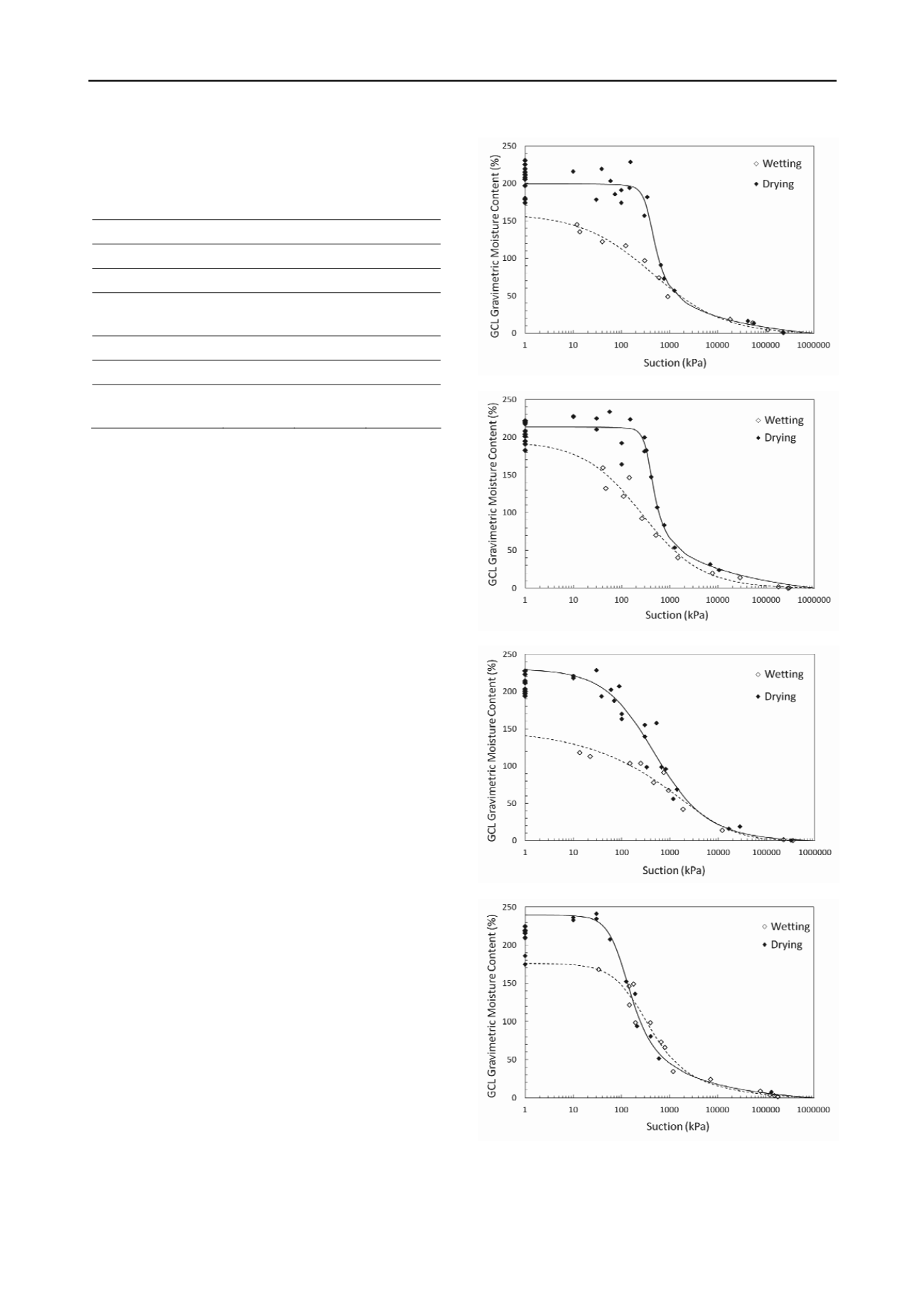
3026
Proceedings of the 18
th
International Conference on Soil Mechanics and Geotechnical Engineering, Paris 2013
common in the field and also represents the threshold hydration
water content to maintain low hydraulic conductivity (Scalia
and Benson 2011).
Table 1. Properties of the GCLs used in the test program
Property
WN2
NN1
WNT
Cover geotextile
Nonwoven Nonwoven
Woven
Cover mass (g/m
2
)
200
200
105
Carrier geotextile
Woven Nonwoven
Nonwoven/
Geofilm
Carrier mass (g/m
2
)
105
200
200/605
Avg. bent. mass (g/m
2
)
4000
3900
4000
As-received water
content (%)
15-19
19-27
14-15
The moisture-suction characteristics of the GCLs were
determined using combined pressure plate, filter paper, and
relative humidity methods for the low (30-300 kPa), medium
(10-100000 kPa), and high (5000-400000 kPa) suction ranges,
respectively. Use of the three methods was required to
investigate the wide range of moisture contents and associated
suctions for the GCLs. The pressure plate tests were conducted
in accordance with ASTM D6836 (Method C), the contact filter
paper tests were conducted in accordance with ASTM D5298,
and the relative humidity tests were conducted using procedures
similar to the tests presented in Beddoe et al. (2011). Specimen
diameters were 50, 100, and 100 mm for pressure plate, filter
paper, and relative humidity methods, respectively. For drying
branches, specimens were submerged to reach saturation
whereas for wetting branches, specimens were hydrated with an
atomizing sprayer to target moisture contents. Tests were
conducted using deionized (DI) water to investigate solely the
moisture-suction response of the GCLs without potential effects
of chemical interactions from ionic species present in tap water.
Microstructure of the specimens was investigated using
scanning electron microscopy (SEM). Relatively undisturbed
specimens were obtained by sampling clay from the GCL and
then fracturing and pulling (instead of cutting and shearing) a
subspecimen for image analysis.
3
RESULTS AND DISCUSSION
The results of the moisture-suction tests for the GCLs are
presented in Figures 1-3 and Figure 4 for as-received and wet-
dry cycled specimens, respectively. Gravimetric moisture
contents were used due to the complexities and uncertainties
associated with using volumetric moisture content for GCLs.
The experimental data were modeled using the Fredlund and
Xing (1994) and Pham and Fredlund (2008) methods. The
Fredlund and Xing (1994) model commonly has been used for
soils and also applied to GCLs (e.g., Beddoe et al. 2011). The
Pham and Fredlund (2008) model had been developed to
provide gravimetric moisture-suction relationships over the
entire range of soil suction for soils that undergo volume change
with suction and was adopted for this test program. The results
of the Fredlund and Xing (1994) model are presented in Figures
1-4 and the model parameters for the two methods are provided
in Tables 2 and 3. Data for air entry and residual suctions also
are provided in the tables.
Figure 1. Moisture-suction relationships for WN2.
Figure 2. Moisture-suction relationships for NN1.
Figure 3. Moisture-suction relationships for WNT.
Figure 4. Moisture-suction relationships for NN1 at 20 cycles.


